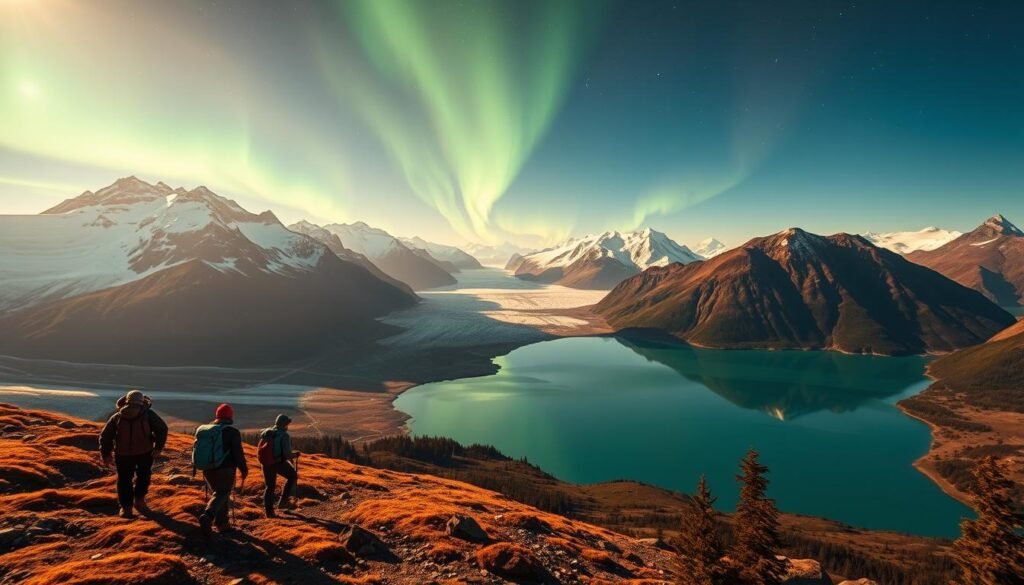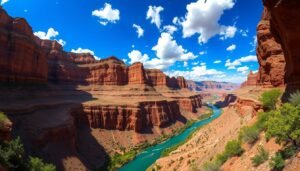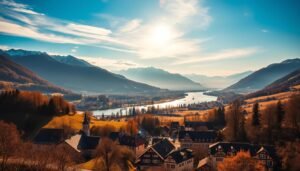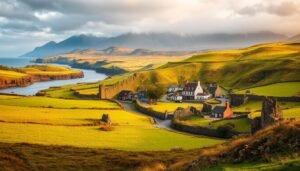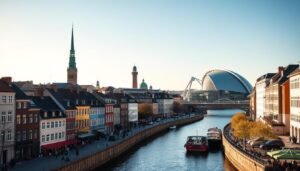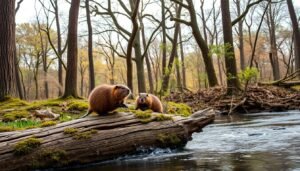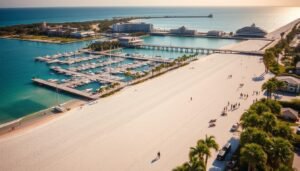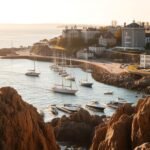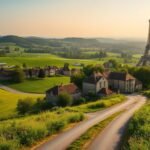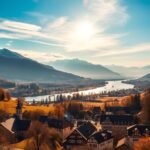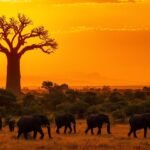Surprising fact: Alaska is more than twice the size of Texas, making it the largest state in the united states and a place where scale reshapes every plan.
I wrote this guide after returning several times. I wanted clear routes, seasonal tips, and compact ideas for a practical trip. I used Anchorage, Seward, and Juneau as common gateways that unlocked national park experiences and small-ship days.
I threaded wildlife encounters—bears, eagles, whales—through each entry and showed how to view them responsibly. I mixed museum stops, scenic drives, flightseeing, and guided glacier hikes so you can match pace and stamina.
What follows will compare short versus full-day cruises, easy versus challenging hikes, and highlight the seasonality that shapes the best times for those sweeping views and towering glaciers.
Key Takeaways
- Alaska’s immense scale sets travel expectations and timing.
- Anchorage, Seward, and Juneau serve as major gateways.
- Wildlife and glaciers feature across diverse routes.
- Options range from easy scenic days to rugged hikes and flightseeing.
- Seasonality matters—late spring through early fall is prime.
Why I Keep Returning to the Last Frontier
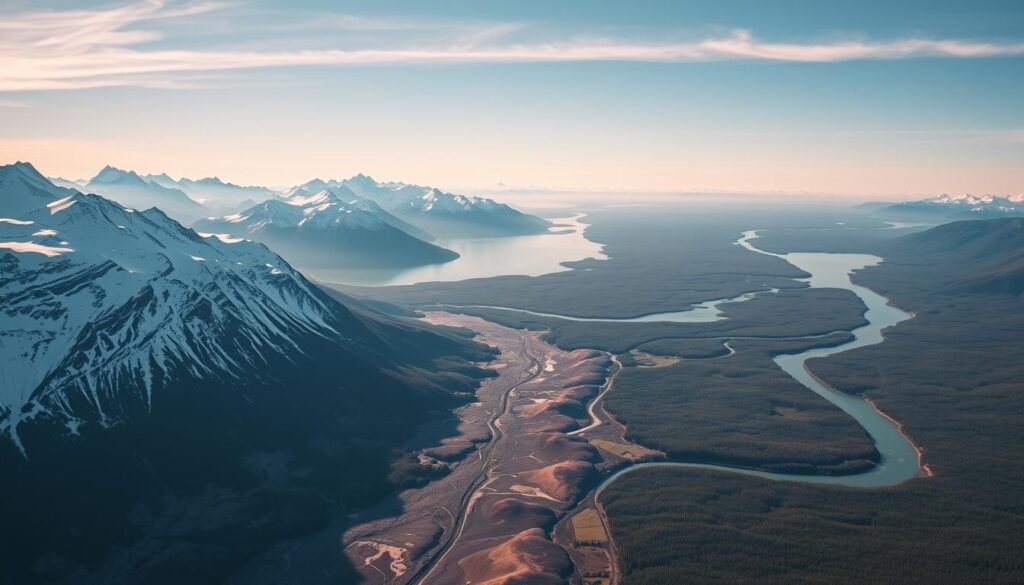
What draws me back is straightforward: endless summer daylight, huge mountain views, and the freedom to choose my own way — by road, rail, boat, or flightseeing.
I often plan a short day for wildlife watching and a longer hike the next morning. Seeing bald eagles wheel above a glacier or whales bubble-net feeding has shaped how I pace each trip.best-time-to-visit-fiji
Culture matters as much as scenery. Stops like the Alaska Native Heritage Center and Ketchikan’s totem parks connect me to people and stories. That grounding makes the landscapes mean more than pretty photos.
- Reset: quiet trails, glacier air, and long horizons clear my head.
- Practical tips: pack layers, expect changeable weather, and book early for busy routes.
- Small towns give coffee, gear, and local advice that keep logistics simple on every day.
Over time my priorities shift. Some visits focus on hiking, others on calm boat days or photography. That variety is why these remain the best places I choose when I plan where I will next visit alaska.
Best places to visit in Alaska
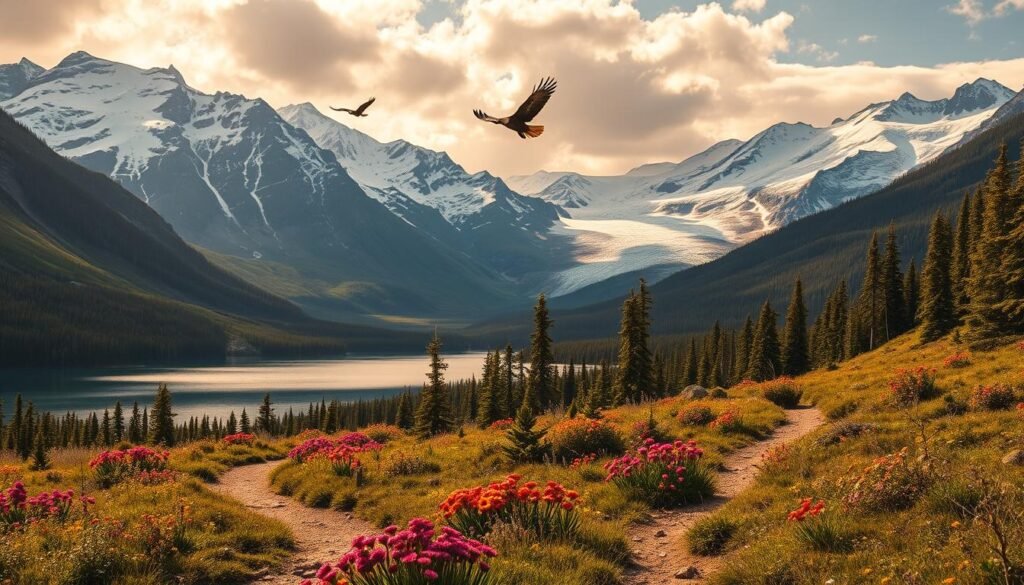
I picked each stop by how easily I could reach it from major hubs and how likely I was to see wildlife and glaciers.
I explain my core criteria here: access from Anchorage, Seward, or Juneau; high wildlife potential; signature ice and fjord scenery; and a mix of easy and challenging options.best-cities-to-visit-in-japan
How I chose these spots (and how you can plan your trip)
I balance a classic route—Anchorage to Kenai Fjords and Denali—with add-ons like the Inside Passage or bear-viewing flights. Denali needs shuttle reservations for deep access. Kenai Fjords day cruises depart Seward. Juneau gives road access to Mendenhall Glacier and Nugget Falls.
Wildlife, glaciers, and fjords: what to expect
Expect sea otters, sea lions, puffins, and whales on fjords days. On trails you’ll find moose and bears; bald eagles are nearly everywhere coastal. I carry motion-sickness prevention for rough seas and layer clothing near ice.
| Activity | Typical Access | Booking note |
|---|---|---|
| Denali shuttle and trails | Bus shuttles from park hub | Reserve transport early |
| Kenai Fjords cruise | Day cruise from Seward harbor | Book full-day cruises in summer |
| Matanuska glacier hikes | Road access from Glenn Highway | Guided crampon tours recommended |
| Inside Passage segment | Short cruise or Alaska Marine Highway ferry | Good for adding coastal scenery |
Anchorage: My Gateway to the Great Land
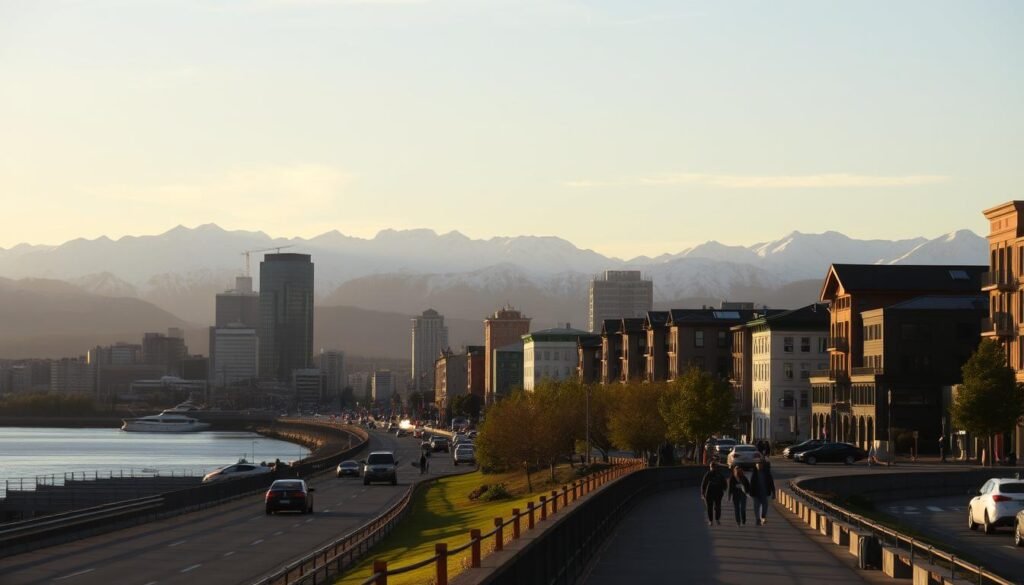
Anchorage has always been my practical jump-off point for exploring huge Alaskan landscapes. I like that flights, gear shops, and good restaurants line up so I can start a trip with little fuss.best-time-to-visit-chicago
Anchorage Museum and Alaska Native Heritage Center
I spend about two hours at the Anchorage Museum. The exhibits on Alaskan history and contemporary art reshape how I see the state.
The Alaska Native Heritage Center sits just outside downtown. It is a living cultural center with village sites, storytelling, and dance that gave me local perspective early in my trip.
Tony Knowles Coastal Trail: moose, views, and easy miles
The Tony Knowles Coastal Trail runs roughly 11 miles along the coast. I use it as a warm-up walk or bike ride, and I often spot moose near the shore.
If I have only a short day, the Deluxe Trolley Tour is a quick way to get local stories and a city overview.
- Why start here: easy flights, gear, dining, and fast access to trails and day trips.
- Errand plan: I batch groceries, bear spray, and last-minute layers before heading into the park or fjords.
- Getting around: bike or rideshare keeps my pace relaxed while I shake off jet lag and enjoy the views.
Chugach State Park and Turnagain Arm: Big Views Close to the City
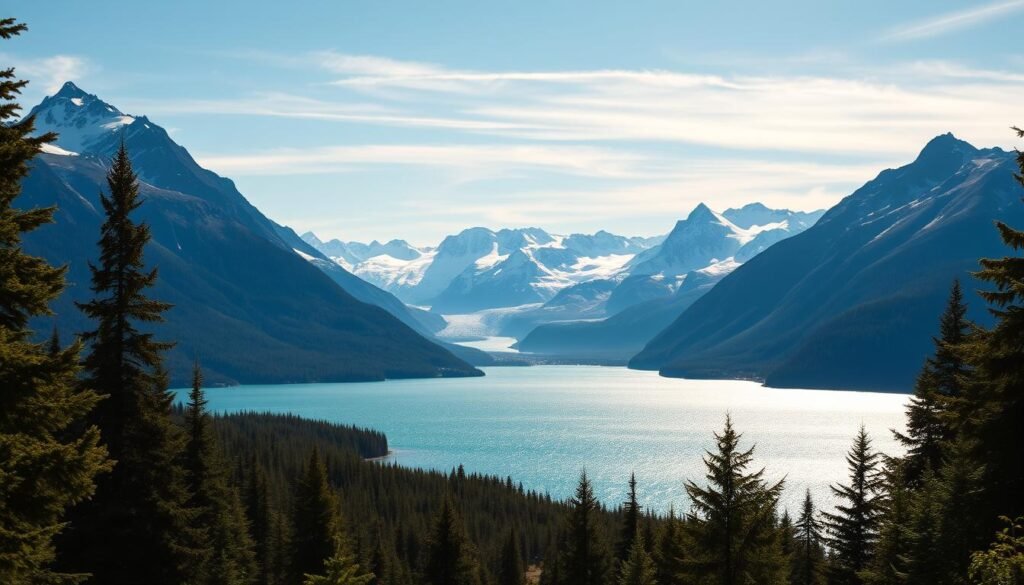
A quick spin out of Anchorage delivers huge mountains and coastal drama within an hour.
I drive into Chugach State Park, which spans about 495,000 acres, for short bursts of alpine air and wide views.
Flattop Mountain from Glen Alps Trailhead
The Flattop hike is roughly a 3-mile round trip from Glen Alps. The trail is short but steep, with a final rock scramble that rewards you with panoramic peaks above the city.best-time-to-visit-colorado
I bring sturdy shoes, wind protection, and poles when surfaces look slick. That gear makes the scramble safer and more fun.
Scenic stops along the Seward Highway and Beluga Point
The Seward Highway is a steady string of pullouts for Turnagain Arm tidal flats, Dall sheep, and bald eagles. I time Beluga Point visits around higher tides in late summer for the best chance at beluga whales.
I often pair a morning Flattop climb with an afternoon scenic drive, packing a picnic and a thermos. Weather shifts fast here, so I keep a spare layer in the car and remind drivers to pull over safely for photos along this winding way.
“The view is wide, the road is narrow, and you must stop for the moment.”
| Spot | Typical Access | Notes |
|---|---|---|
| Flattop Mountain | Glen Alps trailhead | 3-mile round trip; final rock scramble; wear sturdy shoes |
| Seward Highway pullouts | By car along highway | Tidal flats, Dall sheep, eagle viewing; many safe turnouts |
| Beluga Point | Short walk from parking | Late-summer high tides boost beluga sightings |
Kenai Fjords National Park: Ice, Ocean, and Wildlife
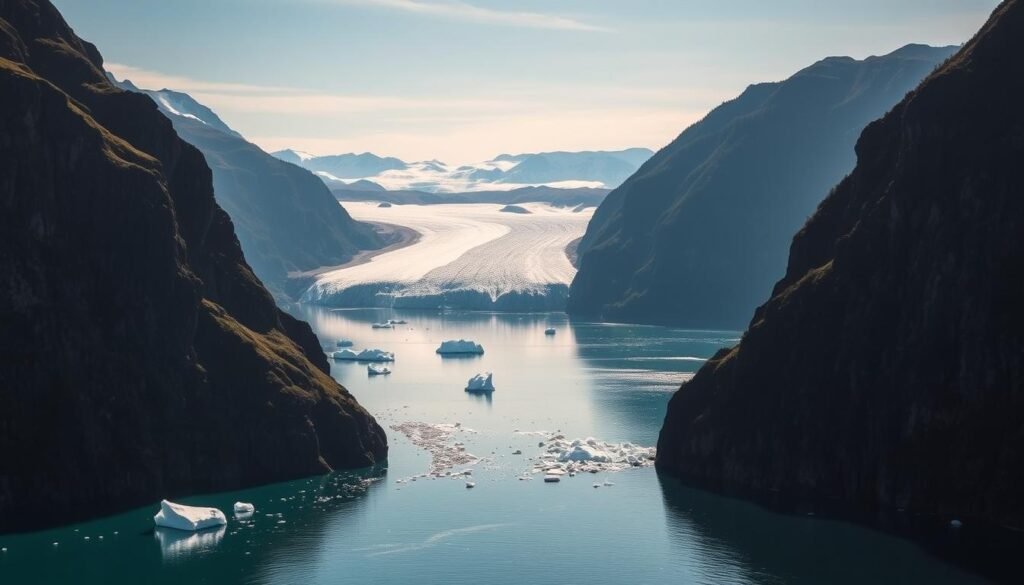
I block a full day for kenai fjords national because the Harding Icefield and its tidewater glaciers deserve time and attention. A day cruise from Seward is the usual way I see the main glacier faces and the deep blue calving walls.
Day cruises to tidewater glaciers and marine wildlife
I favor longer cruises when I can. They mean more time near active glaciers and a better chance of hearing ice calve. On those tours, rangers or naturalists often explain geology and ecology.best-time-to-visit-norway
Wildlife to watch: sea otters, sea lions, puffins, and whales
The wildlife is the highlight. I typically spot sea otters wrapped in kelp, rafts of sea lions, puffins on cliffs, and whales feeding in season. Good operators point out subtle behavior and rare sightings.
When seas get rough: my motion-sickness tips
Seas can turn choppy; I take precautions. I use ginger chews or Dramamine early, stay on deck for fresh air, and focus on the horizon. Waterproof layers, a warm hat, and lens cloths make damp, icy spray manageable.
“A calm, full day on the water often rewards patience with unforgettable glacier moments.”
See cruise options and timing for more planning ideas, and then plan a mellow evening in Seward for chowder and rest before more hiking.
Exit Glacier and the Harding Icefield: Iconic Glacier Adventures
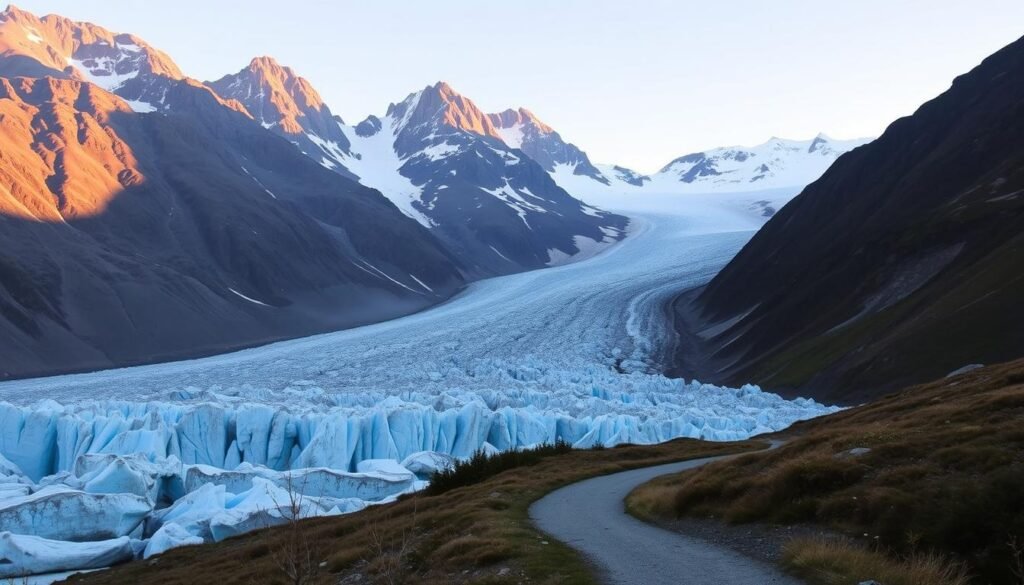
Some days demand a short loop; others call for an all-day climb into the heart of an icefield. I use Exit Glacier when I want a quick, vivid encounter with ice and a clear view without a heavy commitment.
Glacier View Loop vs. the harder trail
The Glacier View Loop is about one mile from the visitor area and works well for families or after a Kenai Fjords cruise day. It gives immediate glacier perspective with minimal effort.
Why I choose the Harding Icefield Trail on a full day
The Harding Icefield Trail is roughly eight miles round trip with steady elevation and often rain. After a long climb, the 700-square-mile icefield spills into view, feeding dozens of glaciers — that moment never feels routine.
- Must-have gear: waterproof jacket and pants, warm layers, lug-soled boots, trekking poles.
- Start early: cooler temps, better light, and a safer daylight buffer for breaks and photos.
- Safety: check NPS alerts, stay on marked paths, and respect closures near moving ice.
“I celebrate the return to Seward with a hot meal, a hot shower, and a quiet waterfront stroll.”
Seward and the Alaska SeaLife Center
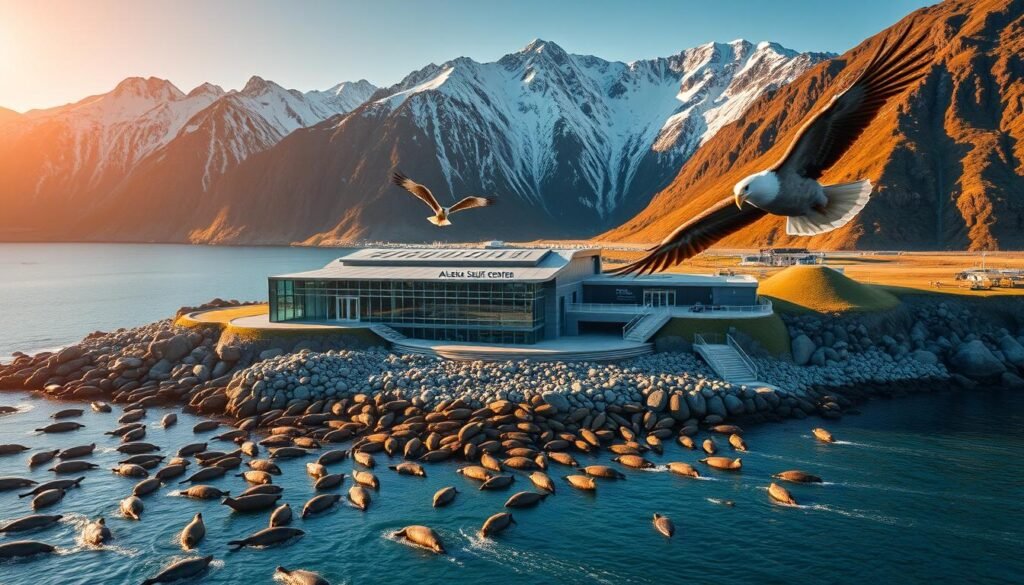
Seward packs a surprising mix of harbor life and marine science into a compact, walkable waterfront.
The town is the usual launch point for Kenai Fjords cruises, so I often shape a day around a morning harbor walk and an afternoon on the water. A stroll from the Small Boat Harbor to the marine center takes you past murals, beaches, and working docks.
From Small Boat Harbor to waterfront strolls
I map a perfect Seward day like this: coffee by the boats, a slow waterfront walk, then time inside the SeaLife Center. The path is flat and easy—good for recovering after the Harding Icefield or before a long cruise.
Inside the Alaska SeaLife Center: rehab, research, and education
The alaska sealife center operates as a rescue and research hub. I loved watching puffins dive and seeing sea otters and harbor seals that may be rehabbing for release.best-places-to-visit-in-september
- Why go: up-close learning about rescue, rehab, and local alaska sealife.
- Timing: visit on a rainy spell or pair it with half-day boat tours so you don’t feel rushed.
- Local tips: scan the harbor for sea otters and seals and ask captains about weather and conditions the day before your cruise.
“Seeing a released animal on a later trip makes the center’s work feel quietly heroic.”
| Spot | What I do there | Why it helps my trip |
|---|---|---|
| Small Boat Harbor | Coffee, scan for wildlife, meet captains | Checks weather and local conditions before boat tours |
| Waterfront path | Easy walk past murals and beaches | Low-effort recovery after hikes; great views and photo stops |
| Alaska SeaLife Center | Exhibits, rehab viewing, education programs | Improves wildlife ID for boat tours and enriches your marine wildlife knowledge |
Denali National Park: Six Million Acres of Possibility
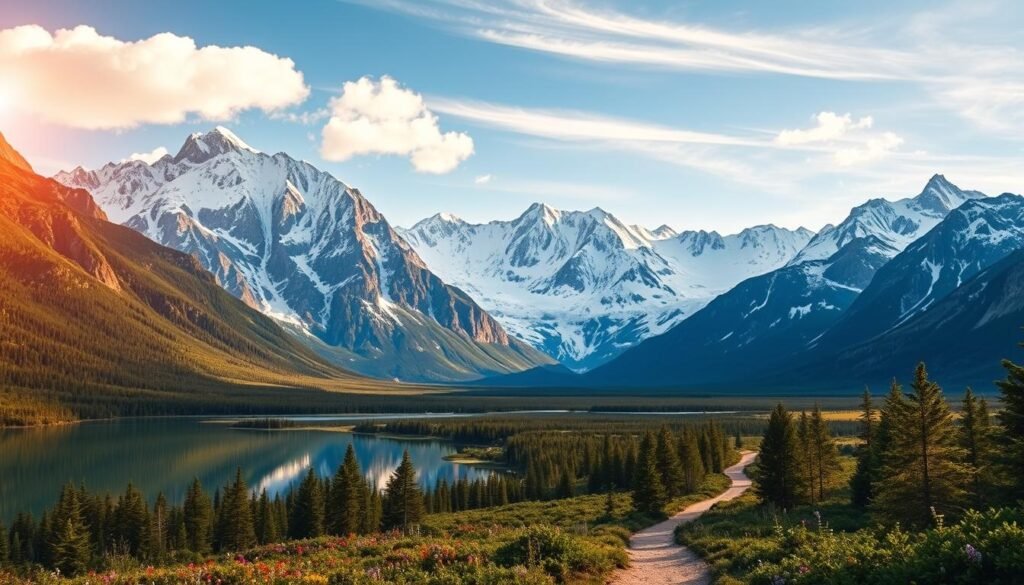
Denali’s scale hits you quiet and fast the first time you see that skyline peel away from the road. The park covers roughly six million acres and holds North America’s tallest peak at 20,310 feet.
I split my time into two focused days. One day is for shuttles and slow wildlife watching. The other is for a proper hike or a flightseeing trip when weather allows.
Curry Ridge, Savage Alpine, and flightseeing around Denali
I like Curry Ridge for a moderate ~7-mile out-and-back that pays off with wide views of the massif. Savage Alpine is steeper and shorter at about 4 miles point-to-point for a more strenuous push.
Flightseeing gives staggering perspectives. Weather rules the schedule, but when it opens, glacier landings and aerial views change how you remember the park.
Guided tours, shuttle strategy, and wildlife etiquette
- I take early shuttles to beat crowds and boost chances of spotting bear, moose, caribou, and Dall sheep.
- Guided tours add context and reduce navigation stress on longer hikes.best-greek-islands-to-visit
- Respect wildlife: stay quiet, keep distance, and never feed animals — it keeps both of us safe.
When to visit for peak views and fewer crowds
I aim for late May through early September for reliable wildlife activity and clearer light. Shoulder-season mornings can reward patience with good visibility and thinner crowds.
“I book nights near Healy or the park entrance so dawn starts and evening light stay flexible.”
Before you go, check park updates and shuttle rules. For more on options and timing, see things to do in Denali and plan your trip around the best weather windows.
Talkeetna: Art, Air, and the Spirit of Denali
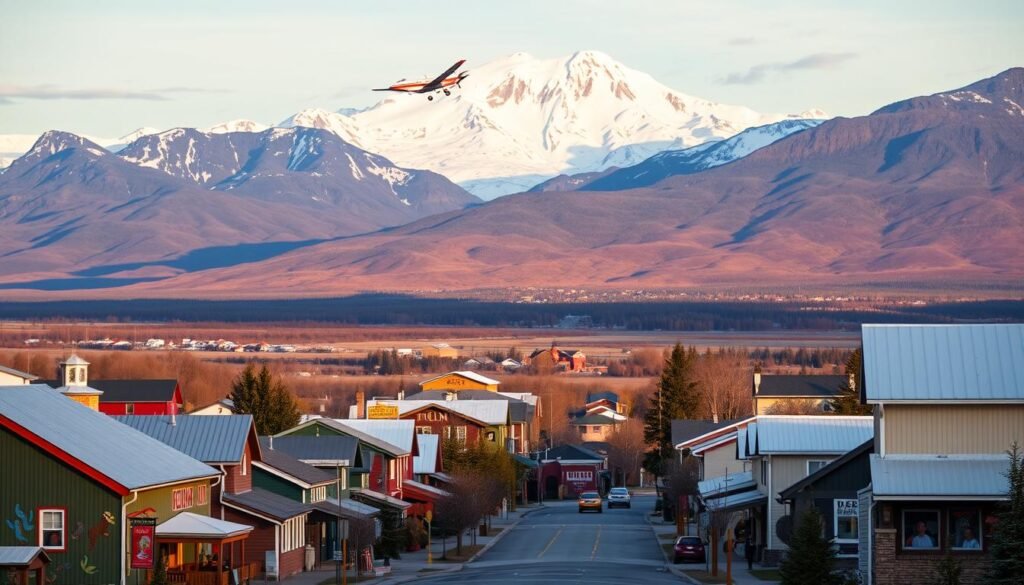
A small town with big views, Talkeetna felt like a welcome pause on my northbound road trip. It serves as my favorite launch pad for Denali flightseeing and glacier landings when weather cooperates.
I spend a half-day here wandering galleries, popping into artisan shops, and visiting the Historical Society Museum. I like to chat with rangers at the Walter Harper Talkeetna Ranger Station for local tips and current conditions.
Nagley’s General Store is a must for that old-time Alaska feel and useful supplies for the way north. If the sky clears and Denali reveals itself, I head straight for the airstrip and book a flightseeing tour with a glacier-landing option.
When clouds keep planes on the ground, I have a backup plan: grab fresh pastry, walk a short local trail, or linger with a museum hour. At sunset, I often stay by the river and watch the light shift on the horizon, hoping the mountain will show.
“Clear days are gold — if Denali is out, the airstrip becomes the fastest route to unforgettable views.”
- Quick half-day loop: galleries → museum → ranger chat → Nagley’s stop.
- Flight tip: book glacier landings when forecasts look stable; windows change fast.
- Backup ideas: bakery run, riverside sunset, or a short trail if flights are grounded.
| Activity | Access | Why I do it |
|---|---|---|
| Flightseeing with glacier landing | Talkeetna airstrip | Direct Denali views and glacier access when weather allows |
| Historical Society Museum | Town center | Local history and context for the region |
| Walter Harper Ranger Station | Main street | Current conditions and ranger tips for denali national area |
| Nagley’s General Store | Walkable from center | Old-time atmosphere and trip supplies |
Kenai Peninsula Highlights: From Homer to Resurrection Bay
The Kenai Peninsula became my go-anywhere base for beaches, bays, and quick wildlife outings. I use it when I want a single region that mixes art, seafood, short hikes, and marine access.
Homer Spit and Kachemak Bay day trips
I map a typical Homer day around the Spit: a stroll on the boardwalk, local galleries, then a water taxi or kayak into Kachemak Bay.best-time-to-visit-st-lucia
That bay offers calm paddling, rafting options, and a good chance at sea otters and bald eagles while small charter boat tours run frequent departures.
Ninilchik heritage and coastal views
Ninilchik blends Alaska Native and Russian history into a photogenic coastline. I stop for photos, local stories, and simple seafood lunches with broad coastal views.
Resurrection Bay: kayaking, boat tours, and WWII history
Resurrection Bay is my split day: half on a wildlife cruise or kayak, half hiking toward the WWII-era Caines Head ruins.
Typical water sightings include puffins, whales, sea lions, and bald eagles. Summer weekends get busy—book lodging and boat tours early, and aim for sunrise or late-evening walks for calmer winds.
Matanuska Glacier: Alaska’s Most Accessible Ice Walk
Two hours on the Glenn Highway puts you at an enormous river of ice that I still find thrilling and manageable. This glacier is the largest road-accessible glacier in the state, roughly 27 miles long and about 4 miles wide.
Guided crampon hikes and Glenn Highway viewpoints
I choose a guided hike here because guides supply crampons, safety briefings, and the know-how to read blue ice and hidden crevasses. Groups move at a comfortable pace, which makes this an ideal introduction for first-time glacier trekkers.
I map the drive with pullouts for light and mountain views. I usually book a morning tour for firmer ice and crisper visibility before afternoon clouds roll in.
- I love the crunch of blue ice underfoot and the chance to peer into crevasses safely.
- Bring warm layers—even on sunny days—and sunglasses for glare.
- Rifle Lodge is my go-to for lunch with glacier views after a solid day outdoors.
“Follow guide instructions near moulins and crevasse fields; it keeps the experience vivid and safe.”
For context, I sometimes compare this way with a mendenhall glacier visit, but Matanuska’s road access makes it a practical trip when time is short and you want real ice up close.
Hatcher Pass: Alpine Trails and Gold Rush Echoes
Hatcher Pass feels like a high-country postcard the moment the road gains shoulder and sky. I often drive up from Palmer or Wasilla for a quick alpine day that mixes easy lakes, ridgelines, and living gold rush history.
Start at Independence Mine State Historical Park for context. The park preserves 16 historic buildings and gives a guided sense of how miners lived and worked. That background makes the trails feel like chapters rather than just scenery.
Gold Cord Lake, Lane Basin, and beyond
The family-friendly Gold Cord Lake trail is roughly 1.7 miles round trip and great for a short hike with excellent views. Lane Basin runs closer to 3 miles and opens into broad valley panoramas and wildflower meadows on warm days.
Trails can be muddy and mossy; I always bring waterproof footwear and a spare layer for ridge winds. Reed Lakes and the Gold Mint routes are easy add-ons if I want a longer outing from the same trailhead.
- Why I love it: fast access from Anchorage-area towns for alpine lakes and ridgelines.
- Timing tip: weekdays are quieter; weekends fill with locals.
- Practical: stop in Palmer for coffee and groceries, then pack a picnic for a high-pass pullout.
“Hatcher Pass is an efficient way to pair a short hike with big mountain views and a slice of history.”
Whittier and Prince William Sound
Whittier feels like a gateway tucked between mountains, where cruise boats slip quietly into Prince William Sound. The town sits at the head of Passage Canal, about 1.5 hours by road from Anchorage via the Anton Anderson Memorial Tunnel.
I drive here for calm-water fjord days that put hanging glaciers, waterfalls, and wildlife within easy sight. The town’s quirky 14-story Begich Tower houses most services and gives Whittier its photogenic, compact character.
Timing matters. I pad travel time for the tunnel schedule and for boarding. Clear-day departures yield the best views—glassy mornings show mirror reflections and open mountain lines.best-time-to-visit-croatia
Typical Sound sightings include bald eagles, harbor seals, and quiet hanging ice. I often combine a short harbor stroll or a nearby trail with a full day on the water so I do not rush the experience.
Notes: dining is limited; pack snacks and a warm layer, especially in shoulder season. Compared with Kenai Fjords, Prince William Sound tends toward gentler seas and quieter docks, with a different glacier perspective and a calmer way to enjoy coastal scenery.
Alaska Wildlife Conservation Center
A short stop at the Alaska Wildlife Conservation Center always reshapes my day with calm, close-up animal encounters.
The conservation center near Turnagain Arm rescues and rehabs wolves, coyotes, foxes, bears, bison, and bald eagles. I call it my favorite reliable way to see Alaska wildlife up close while supporting real wildlife conservation work.
Rescued residents: bears, wolves, foxes, and bald eagles
Visitors learn through short interpretive talks and trail-side signs. Those moments make the animals feel like individuals, not exhibits.
- I often pair this stop with a Portage or Whittier day run to break up driving and add learning to a scenic day.
- Photo chances are strong — especially in late afternoon light when the mountains provide dramatic views.
- Quiet observation matters: patience and respect keep animals calm and your visit meaningful.
“A late-afternoon stop usually yields softer light, fewer crowds, and a quieter feel around the enclosures.”
| What I see | Why it matters | Visitor tip |
|---|---|---|
| Bears and wolves | Rehabilitation stories and natural behavior observations | Attend a scheduled talk for context |
| Foxes and coyotes | Smaller carnivores shown in safe, educational enclosures | Use a moderate telephoto for respectful photos |
| Bald eagles and bison | Iconic birds and large mammals rescued or housed for care | Plan an afternoon visit for better light and fewer people |
Why I recommend it: the center is family-friendly, it prepares you for wild-viewing trips, and donations directly support rescue work. Check seasonal hours before you go and consider a small gift to help fund ongoing wildlife conservation.
Juneau and Mendenhall Glacier
Juneau packs easy access to ice, wildlife, and the Inside Passage in a single day. I often build a morning around Mendenhall Glacier, which is road-accessible and gives quick glacier perspective without a long trek.
Nugget Falls Trail and lake viewpoints
I start with the Nugget Falls Trail for splash-zone views and then loop to nearby lake overlooks for calm water reflections. Early mornings beat cruise crowds and sharpen light for photos.
Glacier trekking, canoe tours, and Mount Roberts Tram
I book guided canoe or kayak boat tours when I want to approach the ice safely. For ice travel, I only trek with reputable guides—Mendenhall ice caves are seasonal and unpredictable.
The Mount Roberts Tram is my aerial backup when skies clear; it gives panoramic city and channel views that round out a full day.
“I time Juneau stops early, pair glacier time with a whale-watching outing, and end the day on the boardwalk for a true coastal feel.”
| Activity | Access | Why I choose it |
|---|---|---|
| Nugget Falls Trail | Short walk from parking | Close glacier view and lake overlooks; easy for most visitors |
| Canoe/kayak boat tours | Launch from local operators | Approach glacier edges safely; good wildlife and photo chances |
| Mount Roberts Tram | Downtown tram station | Panoramic views, short hikes at the top, and quick city access |
The Inside Passage: Ketchikan, Misty Fjords, and Beyond
On clear mornings the Inside Passage rewards early risers with calm water and sharp light on glacier faces. I plan a morning afloat or a floatplane hop when I can — the light and quiet change everything.
Ketchikan’s Creek Street, totem poles, and rainforest
I walk my favorite Ketchikan loop: Creek Street boardwalks, the Totem Heritage Center, and Totem Bight State Historical Park. That trio pairs local history with rainforest trails that feel immediate and green.
Bring a compact rain jacket and time for a short museum stop; the stories behind the totems add depth to a single day ashore.
Misty Fjords by floatplane or boat
Misty Fjords National Monument spans roughly 2.3 million acres of sheer cliffs and lakes. I compare options: a floatplane gives sweeping aerial views fast, while a boat gives quiet immersion among fjord walls.
Floatplane = speed and panorama; boat = slow, close-up drama. Choose based on how you prefer to absorb scale.
Tracy Arm and Endicott Arm: Sawyer and Dawes Glaciers
On small-boat runs I aim for Tracy Arm and Endicott Arm for tidewater action. Sawyer Glacier and Dawes Glacier deliver towering walls, icebergs, and frequent sightings of seals, whales, and eagles.
I always carry binoculars for cliff-nesting birds and distant whale blows. Early mornings usually mean calmer seas and better light on the fjord walls.
“Book limited-capacity tours well ahead during peak season — flexibility, patience, and good timing make these days memorable.”
- I add a short hike or historic walk in port towns to round out a full day ashore.
- Weather and ice change plans quickly; I keep backup activities and flexible bookings.
- For routes that touch british columbia coasts, expect additional scenery shifts and cross-border notes on timing.
| Option | Why I pick it | When to go |
|---|---|---|
| Floatplane over Misty Fjords | Fast panoramas and photo windows | Clear mornings |
| Small-boat Tracy/Endicott runs | Close glacier views and wildlife chances (sea lions, whales) | Calm days early and late season |
| Ketchikan shore loop | Totems, rainforest walks, local culture | Any port day with light rain gear |
Lake Clark and Katmai: Remote Bear Country
Remote airstrips and patient boat rides made my most memorable bear sightings feel almost accidental. Both parks demand planning, but they repay effort with close, respectful views of brown bears in authentic coastal and river settings.
Lake Clark day trips for bear viewing on the water
Lake Clark National Park sits roughly 100 miles from Anchorage and sees few visitors because it is remote. I flew in from Anchorage and once from Homer for a single day trip that centered on boat-based bear viewing.
On one September outing I counted over 20 bears along a single shoreline. Seeing that many animals in wild, coastal habitat made me value small, guided groups and patient guides.
Katmai’s Brooks Falls: timing salmon runs for peak action
Katmai’s Brooks Falls is iconic for bears catching salmon at classic waterfall platforms. I time my visits for July and September when salmon activity peaks and the action is non-stop.
Access is by air via King Salmon or Homer, and platforms keep viewing safe and focused. Professional operators and strict protocols are essential when you’re this close to feeding bears.
- Why I splurge: boat roaming at Lake Clark feels wild and uncrowded; Katmai is theatre—bears at the falls.
- Plan for delays: weather changes flights and boats; add buffer days.
- Bring: a long lens, patience, and warm waterproof layers for hours of watching.
- Booking note: lodges and camps open seasonally and fill fast—reserve early.
“Professional guides and patient scheduling turned remote logistics into unforgettable wildlife time.”
Conclusion
I keep a strong, simple plan: choose two or three anchor days and build the rest around them. For me that looks like a fjords cruise day, a glacier hike, and a Denali shuttle through the national park.
From Anchorage to Kenai Fjords and Seward, then north to Denali, option branches include the Inside Passage or remote bear country. I encourage you to plan trip logistics early for peak months and permits, but leave room for weather and surprise.
Every trip returns different rewards — whales and calving ice, rare Denali views, or quiet small-town culture that deepens the story. Bookmark this structure and use it to shape your own one best places memory when you next visit alaska.
Thanks for traveling responsibly — protect the parks and communities that make this landscape unforgettable.


